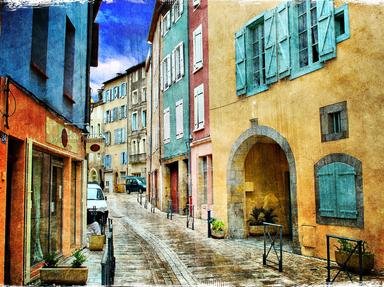Quiz Answer Key and Fun Facts
1. The ancient Egyptians were great artists, but the style of Egyptian art varied little throughout the centuries. There were many conventions in Egyptian art that were observed from the Old Kingdom right down to the last Pharaoh, Cleopatra VII. However, the reign of one Pharaoh saw radical, although short-lived, changes in Egyptian art. Which ruler was this?
2. Let's fast forward a few thousand years. In 1541, this painter finished a large fresco called "The Last Judgment" for the Vatican's Sistine Chapel. Even before it was finished, it caused controversy. Who was the painter who created this work of art, now universally regarded as a masterpiece?
3. Sometimes there doesn't have to be anything controversial about a painting to cause a scandal. Case in point: in 1539, King Henry VIII of England was looking for wife number four. His chancellor, Thomas Cromwell, assured Henry that he knew of a German princess who would be a perfect match. The King's painter-in-residence, Hans Holbein the Younger, was sent to paint the young lady's likeness, and Henry is said to have fallen in love with her portrait. He did marry her, but things did not work out well. Who was the princess whose portrait led to a royal scandal?
4. It is not only men who can create controversial art. Artemisia Gentileschi was, perhaps, the finest female artist of the Baroque period, but one of her paintings was quite sensational. Which one?
5. Francisco Goya (1746 - 1828) created many controversial works of art, but one of his most famous paintings was still creating waves over 100 years after his death. When the Spanish government placed it on a postage stamp in 1930, the United States Post Office refused to accept mail franked with the the offensive image. Which of his paintings, which today hangs in the Prado, created such a fuss?
6. Meanwhile, across the English Channel, a British artist was shaking things up with his unconventional paintings. Some critics, such as John Ruskin, loved him; others were merely puzzled and dismayed. Who was this artist, whose works include "The Slave Ship", "Sunrise with Sea Monsters", and "Rain, Steam and Speed"?
7. Speaking of John Ruskin, he was sued for libel for describing a painting in these words: "The ill-educated conceit of the artist so nearly approached the aspect of willful imposture. I have seen, and heard, much of Cockney impudence before now; but never expected to hear a coxcomb ask two hundred guineas for flinging a pot of paint in the public's face." The artist in question was James Abbott McNeill Whistler, but what was the name of the painting?
8. Back to Europe. Edouard Manet had already created quite a stir in 1863 with his "The Luncheon on the Grass (Le déjeuner sur l'herbe)" which showed two fully clothed men, along with a completely nude woman, and one rather scantily clad female bathing, having a sort of picnic in the woods. But two years later he created an even bigger scandal when he exhibited another nude at the Paris Salon in 1865. This painting caused a storm of protest that was unprecedented in the annals of modern art. What was it?
9. One of the least likely candidates to create a scandal was the American portrait artist, John Singer Sargent. His conservative, realistic style was hardly the stuff of which controversies are made. Nevertheless, he created a major uproar when he exhibited his "Portrait of Madame X" at the Paris Salon in 1884. What detail in the painting caused the most controversy?
10. My final example of controversial and scandalous art is also my favorite, because I got to witness first hand the uproar it caused. In 1987, the mayor of a large American city died suddenly of a heart attack. A few months later, an aspiring artist created a painting of the late mayor wearing a bra, panties, garter belt and stockings. The painting was titled "Mirth & Girth". When it was displayed at a local art school, city officials arrived, and proceeded to confiscate and damage the painting, which resulted in a lawsuit. Where did all this take place?
Source: Author
daver852
This quiz was reviewed by FunTrivia editor
looney_tunes before going online.
Any errors found in FunTrivia content are routinely corrected through our feedback system.

